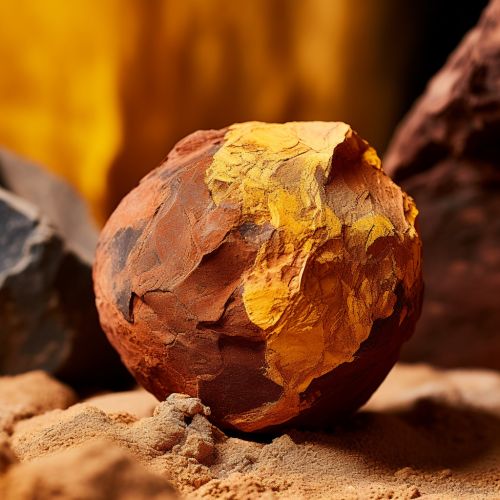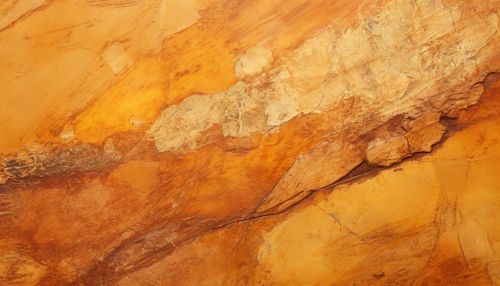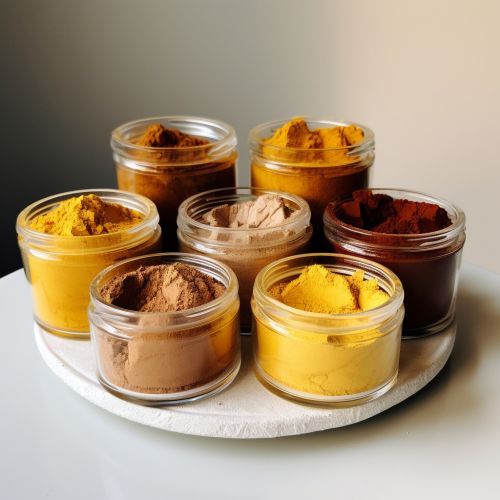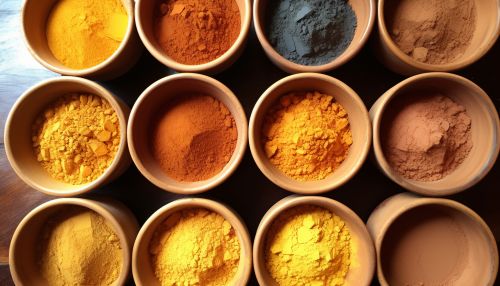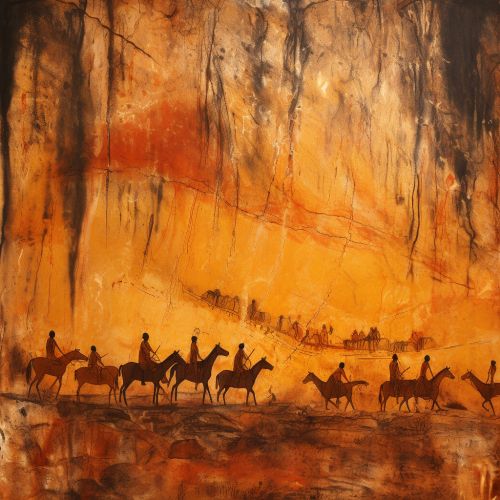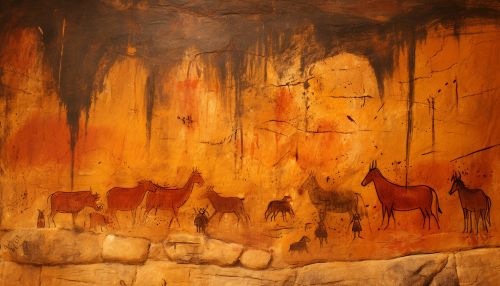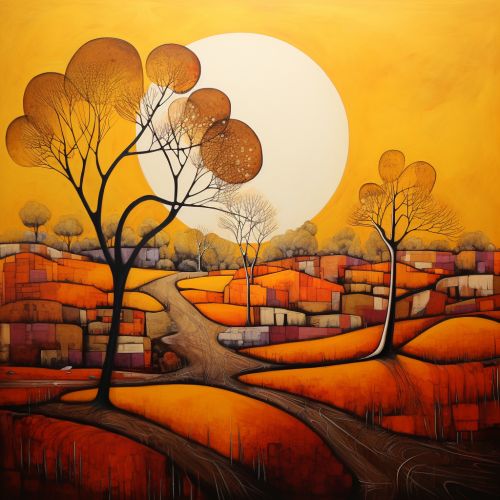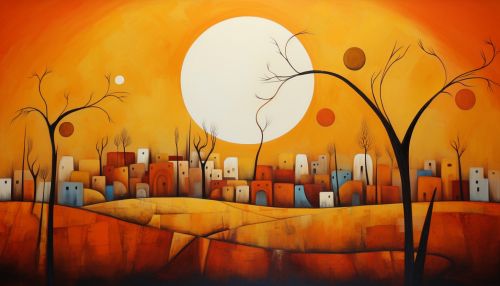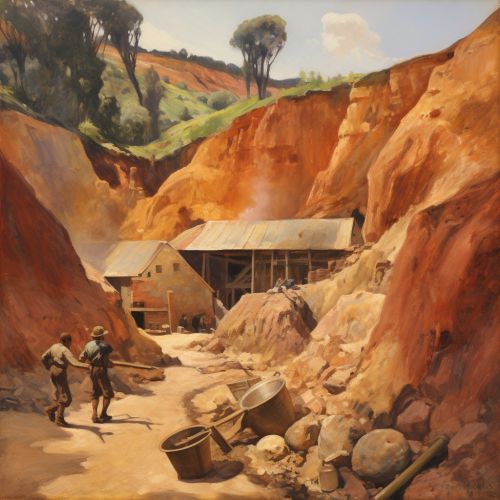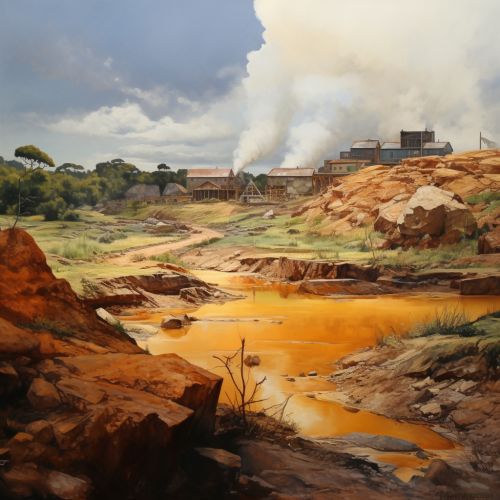Ochre
Introduction
Ochre is a natural clay earth pigment which is a mixture of ferric oxide and varying amounts of clay and sand. It ranges in colour from yellow to deep orange or brown. It is also the name of the colours produced by this pigment, especially a light brownish-yellow. Pigments are substances that impart black or white or a colour to other materials, especially a powder to be mixed with a liquid to produce paint, ink, etc.
Etymology
The word "ochre" is derived from the ancient Greek word ὤχρα (ōkhra), which translates to "pale yellow". The Greeks would use the term to refer to both the pigment and the colour. The term was later adopted into Latin as "ochra", which was then borrowed by Middle English speakers to become "ochre".
Types of Ochre
There are several types of ochre, including red ochre, yellow ochre, purple ochre, sienna, and umber. The major ingredient of all the ochres is iron(III) oxide-hydroxide, known as limonite, which gives them a yellow colour.
Yellow Ochre
Yellow ochre, FeO(OH)·nH2O, is a hydrated iron hydroxide (limonite) also called gold ochre. It is the most commonly used form of ochre and often comes in a variety of shades ranging from light yellow to a deep, rich gold. Yellow ochre is often used in artwork for its vibrant and versatile colour.
Red Ochre
Red ochre, Fe2O3, takes its reddish colour from the mineral hematite, which is an anhydrous iron oxide. Red ochre is commonly used in prehistoric and historic times as pigments in painting and pottery, and in cosmetics.
Purple Ochre
Purple ochre, is identical to red ochre chemically but of a different hue caused by different light diffraction properties associated with a greater average particle size. It is less common than red and yellow ochre and often appears in nature as a dull, dark purple that can be almost black.
Sienna
Sienna contains both limonite and a small amount of manganese oxides (less than five percent), which makes it darker than ochre. When heated, the manganese oxides turn to manganese silicates and produce a reddish-brown colour. This process is known as calcination, and it is used in the production of the pigment burnt sienna.
Umber
Umber pigments contain a larger proportion of manganese (five to twenty percent) which makes them a dark brown. When heated (calcined), the colour becomes more intense, and then becomes known as burnt umber.
History and Uses
Ochre has been used since prehistoric times, up to 300,000 years ago, for a variety of purposes. It was one of the first pigments used by humans, and evidence of its use can be found in many ancient cultures.
Prehistoric and Ancient Cultures
The earliest evidence of the use of ochre comes from the Paleolithic era, where it was used for cave paintings. It was also used by ancient cultures in religious ceremonies and for body decoration. In ancient Egypt, it was used in the process of mummification.
Art and Painting
Ochre pigments are non-toxic, and have been used in art for thousands of years. Yellow ochre was one of the first pigments used in the art of the ancient Mediterranean world, such as in the frescoes of ancient Egypt and Rome. It was often used for the golden touch in gilding.
Industry
In the industrial era, ochre pigments have been used in industries such as textiles, plastics, and ceramics. They are also used in paints for their colouring and protective properties.
Production and Processing
Ochre is usually found as a byproduct of mining other minerals, especially iron. The process of extracting ochre pigments involves several steps, including mining, crushing, and washing. The pigment is then dried and ground into a fine powder.
Environmental Impact
The mining and processing of ochre can have significant environmental impacts, including habitat destruction, water pollution, and air pollution. However, these impacts can be mitigated through responsible mining practices and the use of modern technology.
See Also
